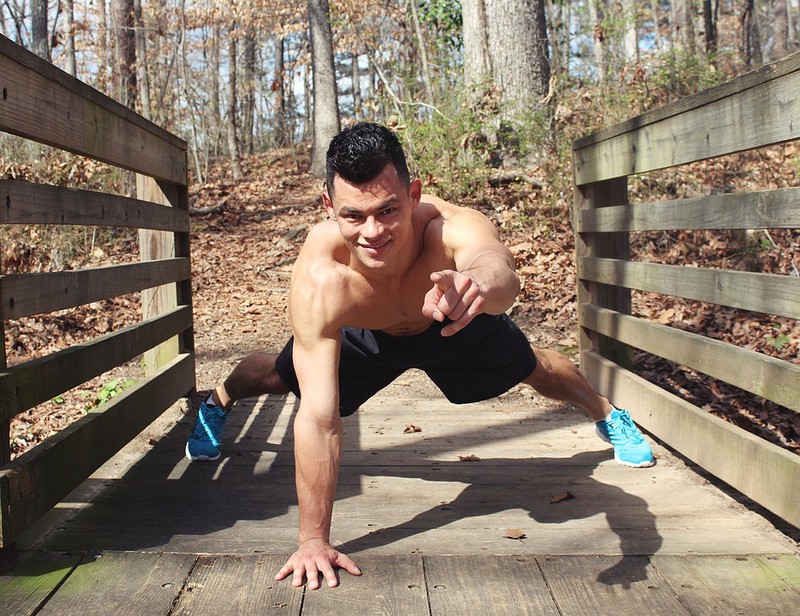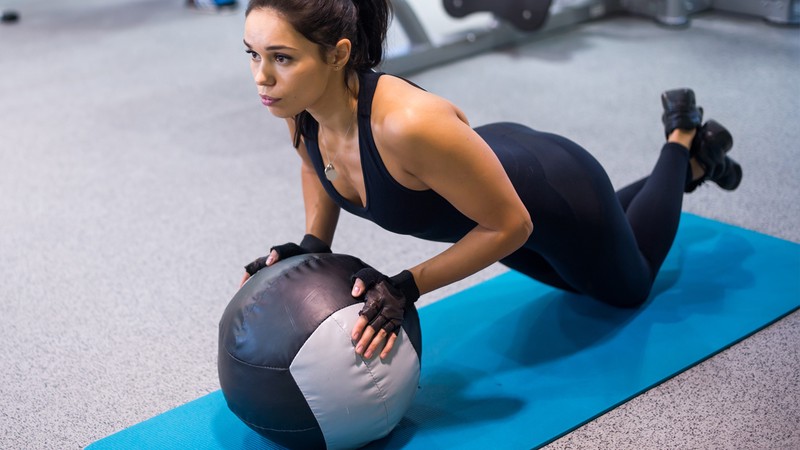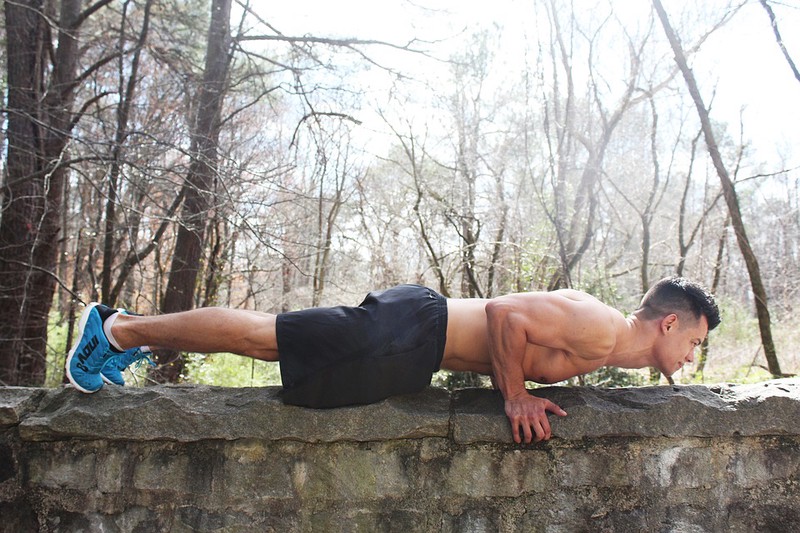The push-up, really does not need presentations. This most complete exercise is part of the sports - and military - customs of all cultures. Its versatility ensures that there are many variations. Besides the traditional push-up, it can be practiced on two arms, an arm, two legs, a leg, inverted, on the knees, hands on the floor, on balloons, and so on ... There are even patented devices to do push-ups hanging in the air !

When done with rigor and in a variety of ways, the push-up has the potential to appeal to almost all muscle groups and can contribute to both strength and endurance. Its great popularity also lies in its simplicity, as it requires no hardware and very little space. Certainly, he does not leave anyone indifferent and everyone has his opinion on its value. Many prefer a place in their training routine, others prefer to leave it in their memories of high school physical education classes. But let's see what science says and what some experts think.
The muscles solicited
If the movement of the push-up mainly works the muscles of the chest (large pectoral), arms (triceps brachii) and shoulders (deltoids), the fact of keeping his body very straight during the execution also solicits the stabilizing muscles trunk, back and legs.
Position of the hands
It is possible to target one or the other of the muscles of the upper body by modifying the position of one's hands. Thus, to make more work triceps, we can perform push-ups "sphinx", where the hands are placed at the height of the forehead and where the bending of the elbows is parallel to the body, until the forearm on the ground - an extremely demanding variant.
You can also increase the effort for the triceps (and the pectorals, but to a lesser extent) by bringing your hands together, to form a triangle by joining thumbs and indexes. Conversely, if you want to use the pectorals mainly, you spread your hands. It is recommended that neophytes push-up and less strong people learn to practice with hands more apart. Some even have fun doing push-ups on the fingertips, on the fists or on the backs of the hands !

Variations to infinity
The position of the hands is not the only thing that adds to the versatility of this exercise. There are indeed many variations to add to the difficulty. One of the best known and oldest is to elevate the feet, which has the effect of substantially increasing the load. One can lift a leg, or perform "spider pumps", an exercise where, down the body, alternately brings a knee touching the elbow.
It is also possible to put your hands on kettlebells and perform an arm pull at the end of the ascent. One can also make a maximum of repetitions in 60 seconds; perform plyometric push-ups (alternating jumpers), moving his hands between the floor and a platform at each repetition; or finally indulge in the traditional "pump-applause".
Some people use unstable surfaces, such as balloons or wobble boards, to perform push-ups. Even if this method increases the number of stressed muscles (the trunk stabilizers), it would not lead to a greater improvement in strength or stamina, compared to push-ups on a stable surface. Finally, what Rocky of us has never tried the push-up on one arm ? In short, the possibilities are endless.
Although the push-up is one of the most traditional exercises, it remains one of the most complete, simple and accessible. Even those who swear by the novelty can not ignore it, so versatility allows applications as varied, demanding and sometimes even absurd !

The traditional push-up
With your hands spread shoulder-width apart, your elbows fully extended, and your body (head-to-feet) as straight as you can, bend your elbows so that your arms are at a 90-degree angle, and move up. You will have done a rehearsal.
PUSH-UPS RECORDS
The latest record for the number of push-ups performed without stopping belongs to the Japanese Minoru Yoshida, who made 10 507 in 1980. For his part, the United States Charles Servizio made 46 001 in 24 hours, in 1993, when the Canadian Doug Pruden scored 1,025 in one hour, all with one arm and ... on the back of the hand !
Comments